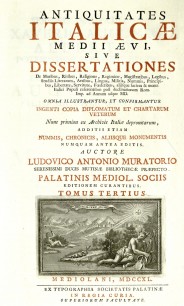
Cola di Rienzo's embassy to Clement VI at Avignon
In 1342 Cola di Rienzo, not yet a tribune of Rome (1347), was included in an embassy of Romans to Pope Clement VI at Avignon. Amongst other things, the ambassadors begged the Pope to visit Rome and announce a Jubilee, inorder to to bring the City out of its decline . The Pope declined to go to Rome but did announce a Jubilee, which was celebrated in 1350
Vita di Cola di Rienzo, in: Ludovico Antonio Muratori, Antiquitates italicae medii aevi sive dissertationes..., vol. III (Historiae romanae fragmenta ab anno Christi MCCCXXVII usque ad MCCCLIV neapolitana sive romana dialecto scripta auctore anonymo...), Milano 1740